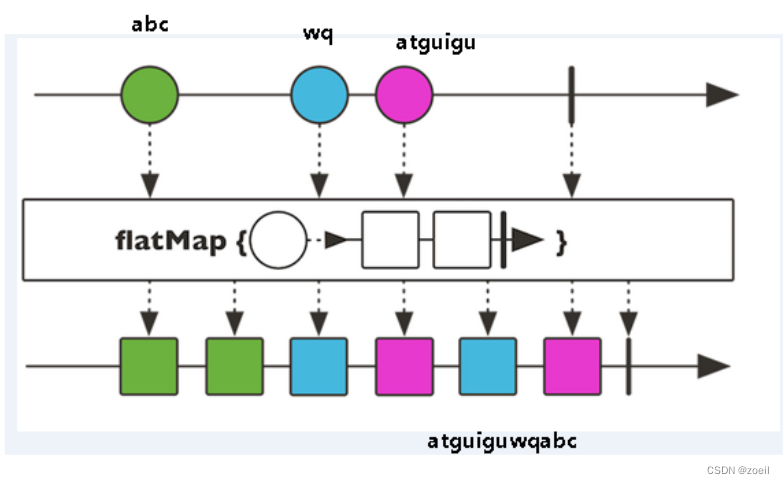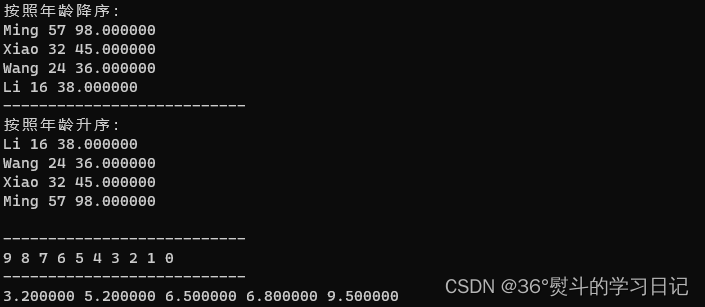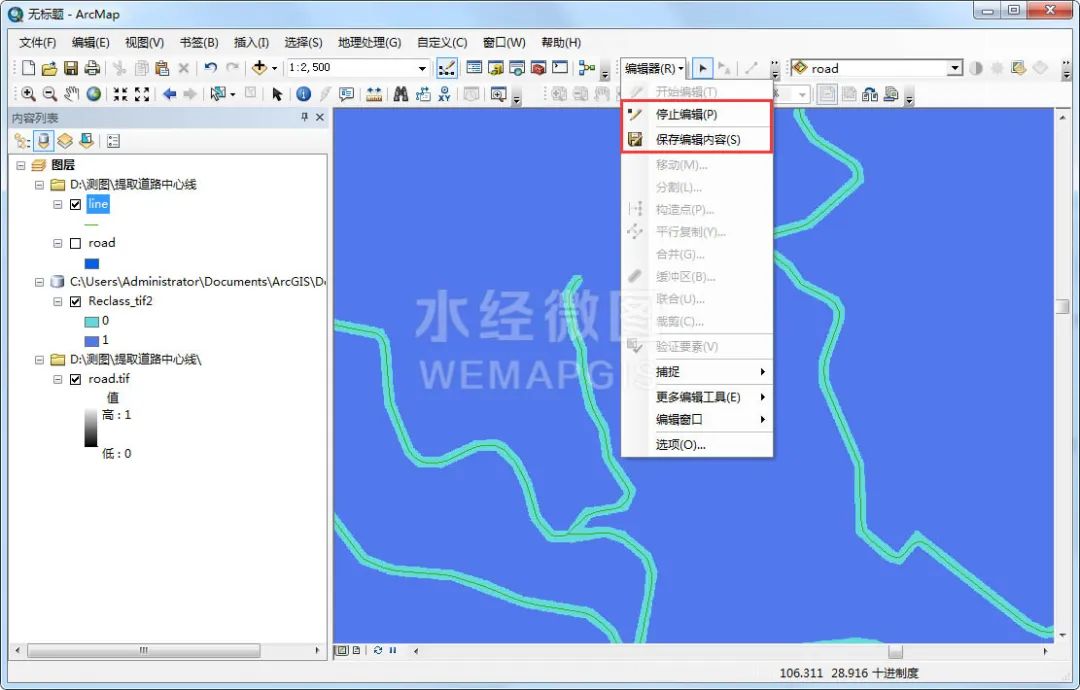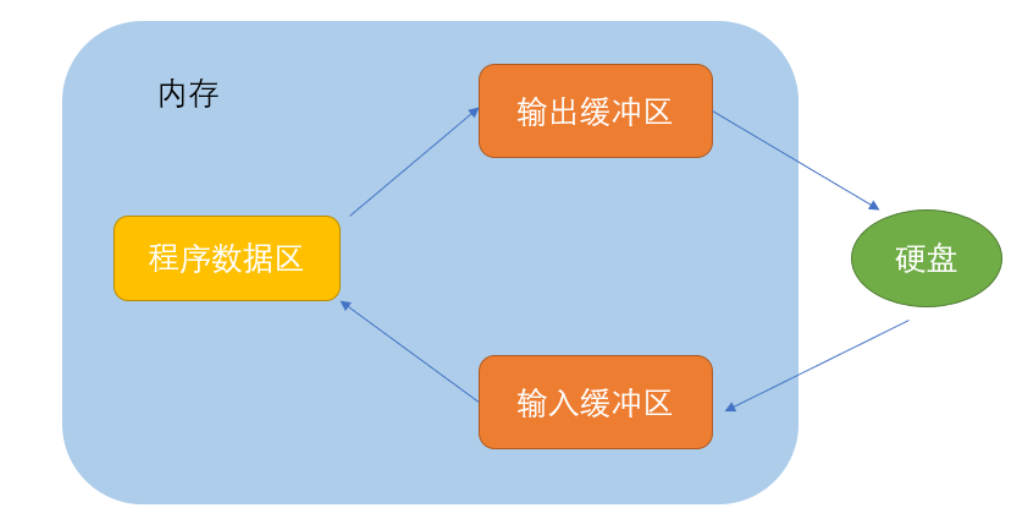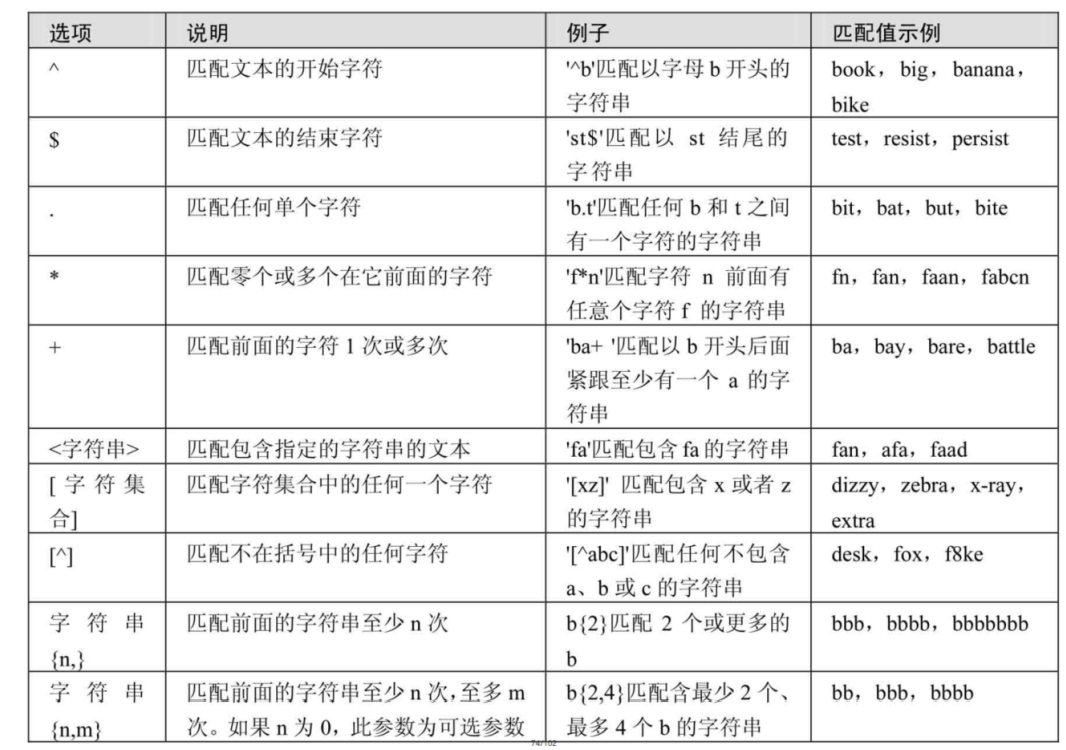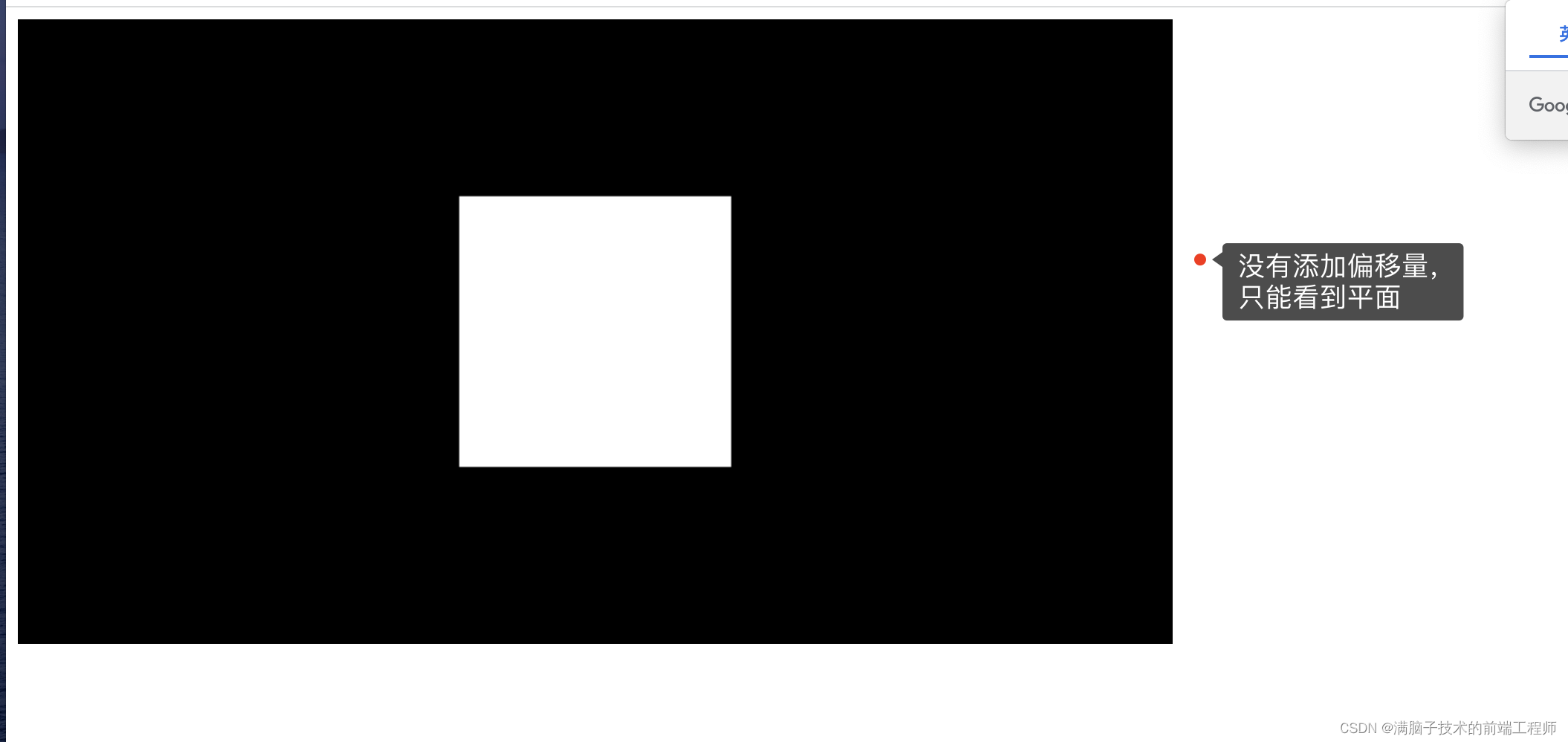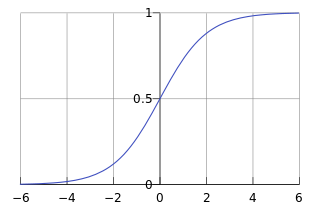目录
1、SpringWebflux 介绍
2、响应式编程(Java 实现)
3、响应式编程(Reactor 实现)
1、SpringWebflux 介绍
(1)SpringWebflux 是 Spring5 添加新的模块,用于 web 开发的,功能和 SpringMVC 类似,Webflux 使用当前一种比较流行的响应式编程出现的框架。
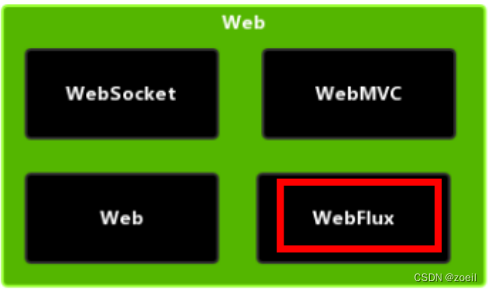
(2)使用传统 web 框架,比如 SpringMVC,是基于 Servlet 容器,而Webflux 是一种异步非阻
塞的框架,异步非阻塞的框架在 Servlet3.1 以后才支持,核心是基于 Reactor 的相关 API 实现
的。
(3)什么是异步非阻塞
* 异步和同步
* 非阻塞和阻塞
** 上面都是针对对象不一样
** 异步和同步针对调用者,调用者发送请求,如果等着对方回应之后才去做其他事情就是同
步,如果发送请求之后不等着对方回应就去做其他事情就是异步
** 阻塞和非阻塞针对被调用者,被调用者受到请求之后,做完请求任务之后才给出反馈就是阻
塞,受到请求之后马上给出反馈然后再去做事情就是非阻塞
(4)Webflux 特点:
第一 非阻塞式:在有限资源下,提高系统吞吐量和伸缩性,以 Reactor 为基础实现响应式编程
第二 函数式编程:Spring5 框架基于 java8,Webflux 使用 Java8 函数式编程方式实现路由请求
(5)比较 SpringMVC
第一 两个框架都可以使用注解方式,都运行在 Tomcat 等容器中
第二 SpringMVC 采用命令式编程,Webflux 采用异步响应式编程

2、响应式编程(Java 实现)
(1)什么是响应式编程
响应式编程是一种面向数据流和变化传播的编程范式。这意味着可以在编程语言中很方便地表达静态或动态的数据流,而相关的计算模型会自动将变化的值通过数据流进行传播。
电子表格程序就是响应式编程的一个例子。单元格可以包含字面值或类似
"=B1+C1"
的公式,而包含公式的单元格的值会依据其他单元格的值的变化而变化。
(2)Java8 及其之前版本
* 提供的观察者模式两个类 Observer 和 Observable
public class ObserverDemo extends Observable {
public static void main(String[] args) {
ObserverDemo observer = new ObserverDemo();
//观察者
observer.addObserver((o, arg) ->{
System.out.println("数据发生改变");
});
observer.addObserver((o, arg) -> {
System.out.println("收到被观察者通知,准备改变");
});
observer.setChanged();
observer.notifyObservers();
}
}java9中,Observer 和 Observable被Flow替代,而Flow是真正的响应式编程
public final class Flow {
private Flow() {} // uninstantiable
/**
* A producer of items (and related control messages) received by
* Subscribers. Each current {@link Subscriber} receives the same
* items (via method {@code onNext}) in the same order, unless
* drops or errors are encountered. If a Publisher encounters an
* error that does not allow items to be issued to a Subscriber,
* that Subscriber receives {@code onError}, and then receives no
* further messages. Otherwise, when it is known that no further
* messages will be issued to it, a subscriber receives {@code
* onComplete}. Publishers ensure that Subscriber method
* invocations for each subscription are strictly ordered in <a
* href="package-summary.html#MemoryVisibility"><i>happens-before</i></a>
* order.
*
* <p>Publishers may vary in policy about whether drops (failures
* to issue an item because of resource limitations) are treated
* as unrecoverable errors. Publishers may also vary about
* whether Subscribers receive items that were produced or
* available before they subscribed.
*
* @param <T> the published item type
*/
@FunctionalInterface
public static interface Publisher<T> {
/**
* Adds the given Subscriber if possible. If already
* subscribed, or the attempt to subscribe fails due to policy
* violations or errors, the Subscriber's {@code onError}
* method is invoked with an {@link IllegalStateException}.
* Otherwise, the Subscriber's {@code onSubscribe} method is
* invoked with a new {@link Subscription}. Subscribers may
* enable receiving items by invoking the {@code request}
* method of this Subscription, and may unsubscribe by
* invoking its {@code cancel} method.
*
* @param subscriber the subscriber
* @throws NullPointerException if subscriber is null
*/
public void subscribe(Subscriber<? super T> subscriber);
}
/**
* A receiver of messages. The methods in this interface are
* invoked in strict sequential order for each {@link
* Subscription}.
*
* @param <T> the subscribed item type
*/
public static interface Subscriber<T> {
/**
* Method invoked prior to invoking any other Subscriber
* methods for the given Subscription. If this method throws
* an exception, resulting behavior is not guaranteed, but may
* cause the Subscription not to be established or to be cancelled.
*
* <p>Typically, implementations of this method invoke {@code
* subscription.request} to enable receiving items.
*
* @param subscription a new subscription
*/
public void onSubscribe(Subscription subscription);
/**
* Method invoked with a Subscription's next item. If this
* method throws an exception, resulting behavior is not
* guaranteed, but may cause the Subscription to be cancelled.
*
* @param item the item
*/
public void onNext(T item);
/**
* Method invoked upon an unrecoverable error encountered by a
* Publisher or Subscription, after which no other Subscriber
* methods are invoked by the Subscription. If this method
* itself throws an exception, resulting behavior is
* undefined.
*
* @param throwable the exception
*/
public void onError(Throwable throwable);
/**
* Method invoked when it is known that no additional
* Subscriber method invocations will occur for a Subscription
* that is not already terminated by error, after which no
* other Subscriber methods are invoked by the Subscription.
* If this method throws an exception, resulting behavior is
* undefined.
*/
public void onComplete();
}
/**
* Message control linking a {@link Publisher} and {@link
* Subscriber}. Subscribers receive items only when requested,
* and may cancel at any time. The methods in this interface are
* intended to be invoked only by their Subscribers; usages in
* other contexts have undefined effects.
*/
public static interface Subscription {
/**
* Adds the given number {@code n} of items to the current
* unfulfilled demand for this subscription. If {@code n} is
* less than or equal to zero, the Subscriber will receive an
* {@code onError} signal with an {@link
* IllegalArgumentException} argument. Otherwise, the
* Subscriber will receive up to {@code n} additional {@code
* onNext} invocations (or fewer if terminated).
*
* @param n the increment of demand; a value of {@code
* Long.MAX_VALUE} may be considered as effectively unbounded
*/
public void request(long n);
/**
* Causes the Subscriber to (eventually) stop receiving
* messages. Implementation is best-effort -- additional
* messages may be received after invoking this method.
* A cancelled subscription need not ever receive an
* {@code onComplete} or {@code onError} signal.
*/
public void cancel();
}
/**
* A component that acts as both a Subscriber and Publisher.
*
* @param <T> the subscribed item type
* @param <R> the published item type
*/
public static interface Processor<T,R> extends Subscriber<T>, Publisher<R> {
}
static final int DEFAULT_BUFFER_SIZE = 256;
/**
* Returns a default value for Publisher or Subscriber buffering,
* that may be used in the absence of other constraints.
*
* @implNote
* The current value returned is 256.
*
* @return the buffer size value
*/
public static int defaultBufferSize() {
return DEFAULT_BUFFER_SIZE;
}
}
public class Main {
public static void main(String[] args) {
Flow.Publisher<String> publisher = subscriber -> {
subscriber.onNext("1"); // 1
subscriber.onNext("2");
subscriber.onError(new RuntimeException("出错")); // 2
// subscriber.onComplete();
};
publisher.subscribe(new Flow.Subscriber<>() {
@Override
public void onSubscribe(Flow.Subscription subscription) {
subscription.cancel();
}
@Override
public void onNext(String item) {
System.out.println(item);
}
@Override
public void onError(Throwable throwable) {
System.out.println("出错");
}
@Override
public void onComplete() {
System.out.println("publish complete");
}
});
}
}3、响应式编程(Reactor 实现)
(1)响应式编程操作中,Reactor 是满足 Reactive 规范框架
(2)Reactor 有两个核心类,Mono 和 Flux,这两个类实现接口 Publisher,提供丰富操作
符。Flux 对象实现发布者,返回 N 个元素;Mono 实现发布者,返回 0 或者 1 个元素
(3)Flux 和 Mono 都是数据流的发布者,使用 Flux 和 Mono 都可以发出三种数据信号:元素值,错误信号,完成信号,错误信号和完成信号都代表终止信号,终止信号用于告诉
订阅者数据流结束了,错误信号终止数据流同时把错误信息传递给订阅者
示例图:
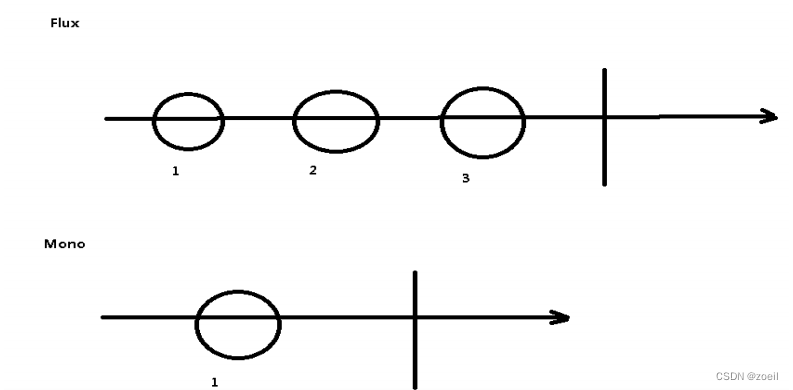
(4)代码演示 Flux 和 Mono
第一步 引入依赖
<dependency>
<groupId>io.projectreactor</groupId>
<artifactId>reactor-core</artifactId>
<version>3.1.5.RELEASE</version>
</dependency>
第二步 编程代码
public class TestReator {
public static void main(String[] args) {
//just 方法直接声明
Flux.just(1,2,3,4);
Mono.just(1);
//其他的方法
Integer[] array = {1, 2, 3, 4};
Flux.fromArray(array);
List<Integer> list = Arrays.asList(array);
Flux.fromIterable(list);
Stream<Integer> stream = list.stream();
Flux.fromStream(stream);
}
}
(5)三种信号特点
* 错误信号和完成信号都是终止信号,不能共存的
* 如果没有发送任何元素值,而是直接发送错误或者完成信号,表示是空数据流
* 如果没有错误信号,没有完成信号,表示是无限数据流
(6)调用 just 或者其他方法只是声明数据流,数据流并没有发出,只有进行订阅之后才会触
发数据流,不订阅什么都不会发生的
Flux.just(1,2,3,4).subscribe(System.out::println);
Mono.just(1).subscribe(System.out::println);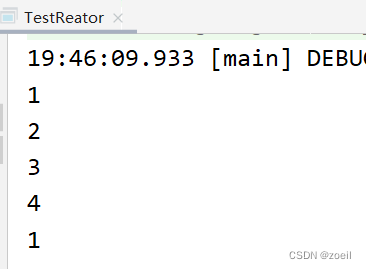
(7)操作符
* 对数据流进行一道道操作,成为操作符,比如工厂流水线
第一 map 元素映射为新元素

第二 flatMap 元素映射为流
* 把每个元素转换流,把转换之后多个流合并大的流
